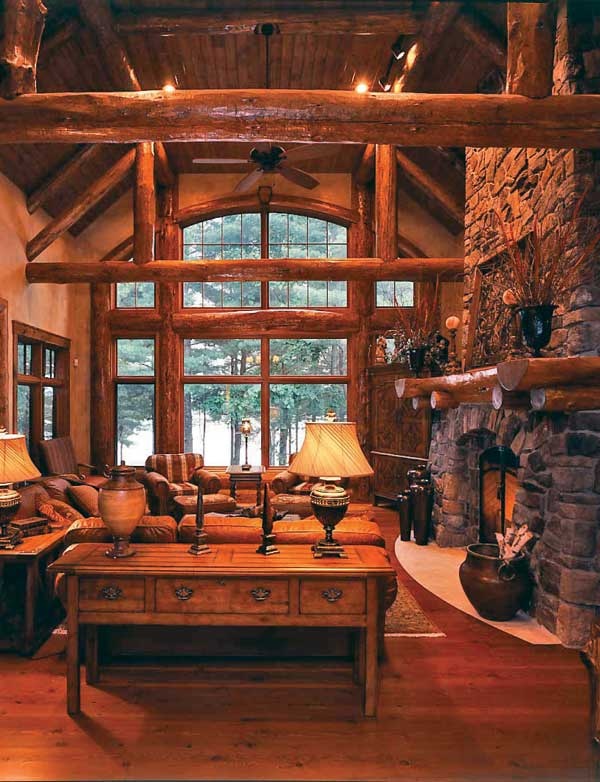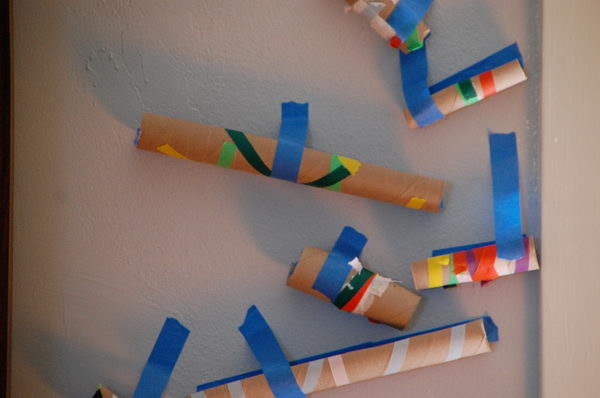Table of Content
This 18-inch measurement can be a problem for log homes built on a slab; in such cases, the first log courses should be pressure-treated logs or the home should be surrounded with gravel to help prevent splash-back. The entire construction process for a typical log home, built by professionals, ranges from four to six months. Factors that affect construction time include season of the year, weather, availability of labor and the level of experience of the builder and subcontractors. The following step by step outline follows the general construction sequence for a log home; keep in mind that individual systems may vary. Build your log cabin as if it doesn’t have doors, windows or openings. Using your selected notch technique, keep stacking your logs and erecting all four walls.

The only thing left before felling your logs is to calculate how many you need. Whilst it’s true, most tree species are suitable, providing that they grow straight and tall. Some species are superior than others due to strength, insulation properties and ability to naturally withstand weathering. The construction phase can come across as being very daunting! We are confident that you have all the information and expert guidance required in this guide to succeed. If staining at the end is too difficult, you can also stain each log as you construct your house.
Log in
Peter prefers the traditional two-sided logs, explaining that flattening only the faces saves hewing time, provides maximum rise from each round , and makes for easier and more efficient chinking. First of all, green logs, while admittedly heavy, are also soft and easy to work, especially with hand tools. Furthermore, dried logs may develop splits that will hinder proper marking, notching, and joining. Finally, individual logs tend to twist as they dry–but if they’re locked into a wall, they ain’t going nowhere. Consequently, a possibility arose that the last few hand-tool-wielding log craftsmen might be allowed to go to their graves with their unique knowledge unshared. While everyone wants a log home as their dream home, few of them really understand the importance of having the right one.
They sag less over time, deflect less under load, are more stable, and have the best color. We use massive Englemann Spruce and giant Lodgepole Pine posts and beams for all our character logs within our homes. Englemann Spruce is also used for the larger diameter log walls, as they react, look, and settle the same as lodgepole, and go hand in hand. Cedar is punky wood, porous, prone to center rot, and the only advantage – the natural oil in cedar wood, is now useless compared to the modern penetrating preservative oils of much better quality and longevity. Peter Gott and his wife, Polly, moved to the Smoky Mountains in 1961, after attending Cornell University in Ithaca, New York.
What You Need to Know Before Building a Log Cabin
Felling in early winter also means the ground will be drier and harder for hauling logs out and you won’t be sloshing around in summer rain and mud. If, for example you have planned a 12-foot by 12-foot space, find a room in a home approximately the same size and gauge whether you would be comfortable in that space. Wood choices, such as cedar, cabin size and usage are all things to consider prior to building. Heating, air-conditioning and ventilationsystems are similarly installed in interior walls for the most part.
Harvest timber from your own property, then create DIY a dovetail jog and you’ll be able to cut logs that will fit perfectly together like a jigsaw puzzle. Cut down the trees on your own land and use them to build this lovely wood cabin. Nothing from the tree goes to waste when building an Alaska style cabin. Individual logsmiths create distinctive touches--wood trusses, doors, etc.--that identify their work.
DOOR AND WINDOW OPENINGS
You really can’t go with any more than 2 inches of taper on a 16 -foot log or you’ll run into problems that chinking won’t even solve. A hand drill and a 20-inch drill bit so you can pin the logs together at the corners if you choose to build that way. For the pioneers, building a log cabin was not just a cool project that you took on for the fun of it. You had to know how to build your own home because there was no one else to build it for you. Two out of every four inquires we receive from prospective clients asks us “how much to build…”.
But if the foundation consists of pillars, you need to flatten the bottoms of the sills only in those areas that will come in contact with the tops of the support columns. Now, standing on the side of the log opposite the surface being hewn, use a wide-bladed ax to split off the rest of the chunks, one at a time. Many of today’s kit homes use logs that are flattened on all four sides at the sawmill–the product resembling long railroad ties. Traditionally, however, logs were hewn only on the two faces, with the tops and bottoms left rounded.
RAFTERS ROUND OR RAFTERS RECTANGULAR?
Even if you buy your timbers milled and ready to notch, you’ll find that a chain saw is a real time-saver for cutting those notches, as well as for expediting numerous other construction chores. And if you plan to harvest your own logs, you’ll need a muscular chain saw and the knowledge to use it safely and maintain it. Unless you plan to build with an extremely soft and rot-prone wood , there’s really no need to apply a preservative.

The saddle notch is far and away the most popular notch for use with round logs. A half-moon-shaped notch is cut into the bottom side of both ends of each new log to conform to the curvature of the log it rests on, often with spikes holding the works together. Advantages of the saddle notch include ease of construction and a rustic, pleasing appearance. Disadvantages are a tendency toward loose corner joints and a weakening of the walls due to a third or more of the diameter of each log being carved out at the notches. In order to make broadax hewing easier, it’s necessary to cut the longitudinal fibers of the wood every few inches along the length of the log. Using an ax, strike several scores parallel to and between what remains of each of the original juggling notches.
It may be necessary to extend the jambs because of the thickness of the log walls. Subflooringin a log home is installed the same as in any other single-family home. Generally, 4-by-8-foot sheets of plywood or particle board are laid over the joist system and screwed, nailed or glued in place. Next, the floorplan of the home is actually drawn or laid out in full size on the subfloor. Every dimension must be carefully measured and double-checked with the blueprints before proceeding. Then you're ready to begin construction of the exterior walls.

You don’t want any leak so be sure to pay attention to details. Coat the cabin with a mixture of linseed oil &turpentine to the outside of the logs – repeat every 5 years. Avoid building in the winter months to reduce log checking, cracking, and splitting. Washing your cabin’s logs will also remove dust, pollen and deposits too.
Now hold a level vertically against the inside face of the log to check for plumb. If necessary, run a sharp handsaw (with well-set teeth) through the joint where the inside face of the log meets the shoulder of the upper notch of the log below. Sometimes two or three passes with the handsaw will be needed to achieve a perfect fit. Hook the framing square over the squared end of the log and make a mark 9 inches in from the end, since we’re working with a hypothetical 6 inch-thick log. This 9 inches represents the 6 inch notch length plus a 3 inch extension beyond the notch.

Log cabins can be really warm year-round if they’re built well. There are a lot of log cabins in cold climates like Canada and Alaska. But a traditional log cabin doesn’t have insulation—the logs are the insulation. Especially if you are attempting to have a modern log cabin style to the house. Logs for modern log cabins are too large for one person to handle themselves. Handcrafting a log home, log by log, can take weeks, even months.
RAISING THE RAFTERS
Keeping the cost down for your log cabin is obviously an important factor. During the planning phase, you should look to eliminate all uncertainty around costs, materials and tools. The width and height of your walls depends on the overall size of your home, so it’s different for every log house.

Peter uses a more complex “locking” joint, in which the bottom of each rafter receives a rectangular notch with its lower edge extended in an arc. In position on the roof, the upper corner of the notch in the rafter’s underside forms a V that points straight down and fits into a matching notch in the plate. In English , that means rafter length equals the square root of the sum of the ridge height squared plus half the outside length of the end wall squared . When the tip of the bar reaches the end of the cut, saw straight down. Stop the cut when the bar is halfway through the log, remove the bar from the kerf, rotate the log 180 degrees, and repeat the above steps to finish the cut from the opposite side.

No comments:
Post a Comment